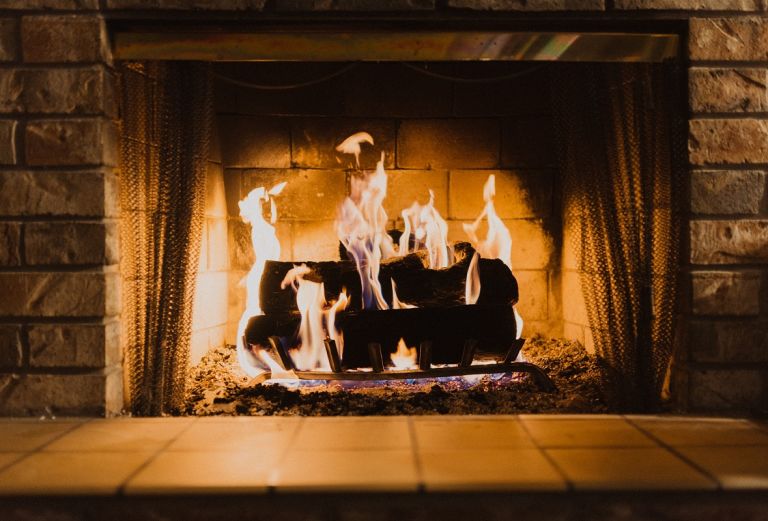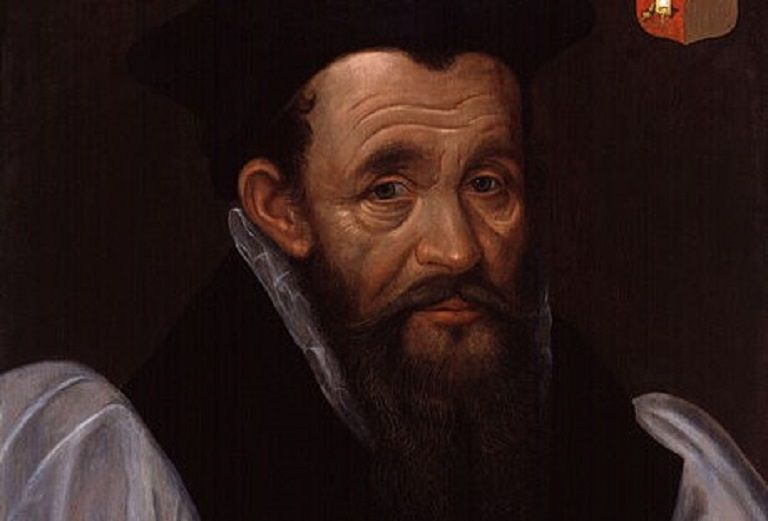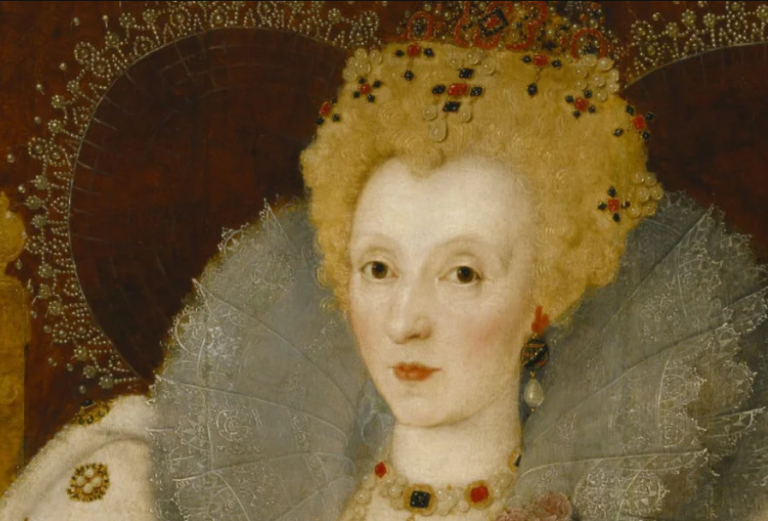
Written by front-of-house volunteer Lee Copeland.
From party guests to overnight travelers, Fulham Palace has welcomed a variety of visitors. While volunteering at Fulham Palace, I’ve had the opportunity to spend some time reading up on the daily court diaries about the life of Queen Elizabeth I. Elizabeth ruled for 44 years, from 1558 until her death in 1603.
Elizabeth I inherited a number of problems stirred up by her half-sister Mary. The country was at war with France, which proved to be a tremendous drain on the royal coffers. However, each year of her reign Elizabeth still attended many parties, and perhaps, not surprisingly taking into account the state of the royal coffers, she dined out a lot at the expense of others. With her court in attendance, she embarked on many travels (Holidays!) across the nation. Her travels were in part political and her duties included giving audience to many foreign ambassadors, political leaders of states, etc. The travels (also known as Progresses) also included occasions such as weddings, birthdays, christenings (sometimes she would be asked to be godmother of the child) and funerals. Whilst traveling, Queen Elizabeth I often enjoyed a dinner party!
As were know, Queen Elizabeth I visited Fulham Palace several times. At one particular banquet held at the Palace in 1601, two men were charged at Middlesex Sessions with ‘Breaking into the Dwelling House of the Bishop of London and stealing a Silver Salt belonging to the Queen who was then at Fulham in the said House’. The verdict after the thieves were caught remains unknown.
On another occasion, Bishop Bancroft, Bishop of London at Fulham, sent a letter to the Earl of Shrewsbury stating ‘Her Majesty is Merry! Long may she continue so and in good health which is our chief worldly comfort.

But on reading the court diaries I’ve been fascinated to learn she visited Putney, more times than she did Fulham Palace! In particular, the home of John Lacy, which she visited ‘more times than any other of her favoured subjects’. In fact, she even visited Lacy before her death in 1603, even though at the time she would have been unwell, she still managed to travel to Putney to visit this favoured man for Diner. Elizabeth visited his residence in Putney during her reign with at least 25 visits from 1578 to 1603. Her visit on 21 January 1603 would be her last visit to John Lacy before her death two months later.
Why Putney?
Putney was first recorded in the Domesday Book of 1086 as Putelei, and later, in 1279, as Puttenhuthe, taking its name from the Old English putta, meaning hawk, and hyth, landing place (Putta was also a personal name). However, archaeological evidence points to the existence of an isolated settlement here both in Roman times and indeed in prehistory.
For most of its long history, Putney was a quiet, predominantly pastoral agricultural and fishing village on the south bank of the Thames a few miles upriver from the City. In the Middle Ages, ferries connected it to Fulham on the north bank and to Westminster downriver. At this time, Putney constituted part of the Archbishop of Canterbury’s Manor of Wimbledon, alongside Mortlake and Roehampton. In the post-Medieval period, the manor passed into private hands, and a scattering of aristocratic houses were built here at this time, including John Lacy’s Putney Palace, where Elizabeth I was royally entertained.
‘Who was John Lacy?’ you may ask. Lacy was born about 1537. John gained his freedom from servitude to Rowland Hayward as a cloth worker in 1558, London. Assuming a seven-year apprenticeship beginning at age 12 his birth is estimated as c1537.
John married Ellin Langton (niece of Sir Rowland Hayward) on 2 July 1560 in St Mary Magdalene Milk St, Cheapside London, where their five children were also baptised.
By indenture dated 15 May 1579 the manor of Manchester was mortgaged by Sir William West Kent, Lord la Warre, alias Lord Delaware and Thomas West Esq his son and heir apparent, to John Lacy, citizen and clothworker of London for £3,000. There was a proviso in the deed that if the said Lord or his son failed to pay by 20 May 1580 the manor was to transfer to ‘John Lacy in West Chepe London’ which it did on 7 August 1581.
John was a very successful merchant, running his business from Cheapside Cripplegate paying subsidy tax from 1578 to 1600 in the St Mary Madeleine parish. By indenture dated 23 March 1595 – 1596 he sold the manor of Manchester for £3,500 to Sir Nicholas Moseley citizen and Alderman of London and Rowland Mosely his son. Helen (Ellin) John’s wife was also mentioned.

Below is a description of John Lacy’s house in Putney.
‘On a portion of the ground now occupied by River Street and River Terrace, stood in former times a building which in its latter days became known as “the Palace,” from the fact of its having been frequently honoured by the presence of royalty.’
It is described as having been a spacious redbrick mansion of the Elizabethan style of architecture, forming three sides of a square, with plate-glass windows overlooking the river, and that it possessed extensive gardens and pleasure grounds.
It was built within a courtyard and approached through iron gates. This house covered the site of the ancient mansion of the Welbecks, whose monument, dated 1477, is in the parish church close by.
The building was erected at the end of the sixteenth century by John Lacy, ‘a citizen and clothworker of London;’ and the ceilings of one of the rooms, it is stated, comprised the arms of the Cloth workers’ Company among its ornamentation.
‘Progresses of Queen Elizabeth,’ says that she ‘honoured Lacy with her company more frequently than any of her subjects. Indeed, from the churchwardens’ accounts at Fulham, it seems that her Majesty visited Mr Lacy at least a dozen times between the years 1579 and 1603; that she frequently dined with this highly-favoured host, and sometimes sojourned for two or three days under his hospitable roof; and that the last occasion of her visit there was only about three months before her death.’
John died at Putney Surrey on 21 August 1606 and was probably buried in the church there, but no monumental inscription is known. After his death, the house had several notable owners.
A survey of Wimbledon Manor, written in 1617, mentions the circumstance of James I having been in this house. His Majesty was himself a member of the Cloth workers’ Company. King James and his queen, we are told, ‘went from Putney to Whitehall previously to their coronation.’
A few years later the house in which the ‘maiden queen’ and ‘gentle Jamie’ had spent so many pleasant hours were occupied by General Fairfax. But, after none out of the many heirs who presented themselves and not having made good their claim to the property, it was disposed of by a clergyman. The clergyman speedily levelled to the ground all that remained of the interesting old mansion.
Of all the visits that took place at Fulham Palace and the surrounding area, I think one of the most interesting entries are those that state Queen Elizabeth I visit to Putney for ‘resting and warming’. Perhaps the need ‘to warm herself’ was not only due to travelling via barge on the Thames, but perhaps, she stopped off to warm herself, before heading to visit a colder house with a less entertaining host, for this ‘Merry Queen’ at Fulham Palace!
Putney visits to John Lacy
1578 Feb 25-27.
1579 Jan 30: dinner.
1580 May 27: dinner.
1581 Nov 16: dinner.
1582 July 10-11.
1584 Nov 12: dinner.
1585 July 20-21.
1586 July 11-12.
1587: ‘Proposed progresses’: May 8-9.
1588 July 29: dinner.
1589 Nov 15: dinner; Dec 2: dinner.
1590 Nov 14: dinner; Nov 25: dinner.
1593 Jan 30: dinner; Feb 17: dinner.
1595 Nov 14: dinner; Nov 27: dinner.
1596 April 2: dinner; Oct 1: visit; Nov 17: dinner.
1597 Sept 19-20; Oct 20: ‘resting and warming’.
1599 Nov 13: ‘to warm herself at’; Dec 7: dinner.
1601 Oct 24: dinner.
1602 Feb 19-20; Nov 15: dinner.
1603 Jan 21: dinner.
Putney Park:
1599 Nov 10: dinner, hunt: Sir William Cornwallis.